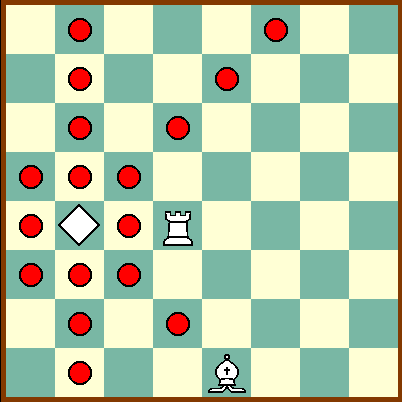Piececlopedia: Friend
Historical notes
The friend was invented by David L. Brown in the early 1970s.Brown, who is a problemist, invented it almost as an afterthought after he invented the Orphan. Brown's book, White and Black from Brown - A Selection of 168 Diagrams and Chess Related Fluff, which contains many problems using the Orphan, mentions the Friend but does not use it in any problems. Brown points out that from a problem standpoint, the Friend is less interesting than the Orphan because it lacks the interplay between the two sides.
The standard symbol for the friend in problem diagrams is a square rotated 45 degrees.
Movement
The Friend is a dummy unit that has no movement powers of its own. Rather, it has the power to move like any friendly piece that is guarding it. If the guarding piece or the Friend moves away, or another piece intervenes, the Friend loses the power it had gained from that piece. Friends can gain powers from more than one piece, and can also gain powers from other Friends, setting off chain reactions if enough friends are positioned right. Brown does not specifically say so, but from the rules of the Orphan, the Friend's complimentary piece that was also invented by Brown, we can determine the following: a Friend guarded by a Rook can not be used to castle, and a Friend guarded by a pawn can not promote or capture en passant.Movement diagram
In the diagram below, the Friend on b4 has the power of both Rook (guarding the Friend from d4) and Bishop (guarding from e1), and hence can move to any of the squares marked by a black circle. If the Rook were to move to d2, the Friend would become immobile, since neither piece would be guarding the Friend.

Remarks
The Friend has not been used in any game thus far, however, it would be an interesting piece on the gameboard. Its potential powers of course, are totally dependent on the army being used, and will diminish as pieces were traded down unless the game is played with drops.The Hero in Tomas Forsman's game Hero Chess is like a Friend, but more powerful since it borrows its moves from any friendly piece on the board, not just those guarding it.
David Howe discusses the Friend and Orphan in a broader context in his article on mimics.
This is an item in the Piececlopedia: an overview of different (fairy) chess pieces.
Written by Benjamin C Good.
WWW page created: September 9, 1998.
